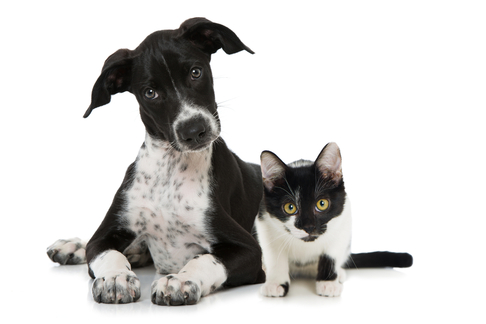Chewing a Single Paw:
When a dog focuses on chewing a single paw, it could indicate localized discomfort, irritation or injury in that specific area. Possible causes of a dog chewing on a single paw include:
Injury or Foreign Object: There may be a splinter, thorn, foxtail or other foreign object embedded in the paw.
Joint Pain: Arthritis or joint issues in a particular paw may lead to chewing as a way of alleviating discomfort.
Nail Troubles: Long or ingrown nails can cause pain and prompt a dog to chew on the affected paw.
Interdigital Cyst: Dogs can get a painful, inflamed lump between the toes or in the webbing of their paw. These are often caused by bacterial infections, foreign bodies (splinter) or underlying allergies
Chewing Multiple Paws:
If a dog is chewing on multiple paws, it often points towards broader systemic issues, with allergies and yeast infections being common culprits. Causes may include:
Allergies: Dogs can develop allergies to various environmental factors, such as pollen, grass, or certain foods, leading to generalized itching and paw chewing.
Yeast Infections: Excessive paw licking and chewing may be a response to yeast overgrowth, often linked to dietary imbalances or environmental factors.
Contact Allergens: Substances like detergents, cleaning agents, or certain surfaces may cause irritation, prompting dogs to chew on multiple paws.
How to Stop Your Dog From Chewing On Paws
Managing a dog that is chewing on their paws involves a combination of preventive measures, addressing potential underlying causes, and providing appropriate care. Here's a comprehensive plan for dog owners dealing with this behavior:
1. Veterinary Examination:
Schedule a visit to the veterinarian to rule out any underlying health issues like arthritis, foreign bodies, or injury. A thorough examination, which may include X-rays or other diagnostic tests, can help identify potential causes such as allergies, infections, or orthopedic problems.
2. Dietary Assessment:
Evaluate your dog's diet. Allergies to certain ingredients or nutritional imbalances often contribute to paw-chewing. Consider switching to a high-quality, hypoallergenic dog food if necessary. Reduce the carbohydrates in your dog's diet as the sugar in carbohydrates can make dogs feel itchy. Raw frozen diets can be helpful for dogs with allergies.
3. Allergy Management:
If allergies are suspected, work with the veterinarian to identify and manage them. This may involve dietary changes, hypoallergenic grooming products, or environmental modifications.
4. Antibiotics or Antifungal Medications:
Depending on the cause, your veterinarian may prescribe topical treatments like antimicrobial ointments or sprays, to promote healing. Your vet may recommend soaking the affected paw in a warm gentle solution to reduce inflammation.
5. Regular Exercise and Mental Stimulation:
Ensure your dog receives adequate physical exercise and mental stimulation. Boredom or stress can contribute to unwanted behaviors, including paw-chewing.







